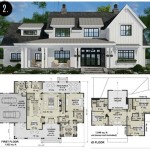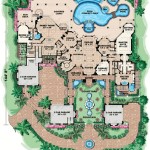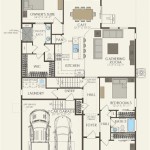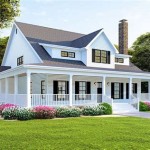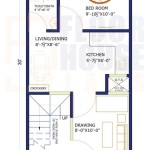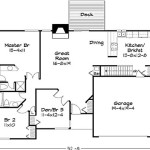Exploring 15-Foot Wide House Plans: Design Challenges and Opportunities
The concept of building houses on narrow lots, particularly those limited to a 15-foot width, is gaining traction in dense urban environments and in areas where land costs are high. This often necessitates innovative architectural solutions and well-considered interior design to maximize space and functionality. 15-foot wide house plans present both unique challenges and compelling opportunities for architects and homeowners alike.
Developing a successful 15-foot wide house plan requires careful attention to detail in several key areas. These include optimizing natural light, maximizing vertical space, creating visual spaciousness, and adhering to local building codes and regulations, which can be particularly stringent for narrow lot construction. Effective planning also considers the overall aesthetic appeal of the home, both internally and externally, ensuring it blends seamlessly with the surrounding neighborhood while maintaining its individual character.
The increasing popularity of tiny houses and minimalist living has contributed to the growing interest in narrow-lot homes. These compact dwellings often prioritize efficiency and sustainability, aligning with the principles of responsible urban development. Furthermore, the availability of advanced building materials and construction techniques allows for the creation of structurally sound and energy-efficient homes, even within the confines of a 15-foot width.
Maximizing Space and Functionality in a Narrow Footprint
One of the primary challenges in designing a 15-foot wide house is maximizing the available space while maintaining a comfortable and functional living environment. Strategic space planning is crucial to avoid a cramped or claustrophobic feel. The effective use of vertical space, through multi-story designs or loft areas, is often essential. Open floor plans, which minimize interior walls, can also contribute significantly to creating a sense of spaciousness.
Built-in storage solutions are another crucial element of 15-foot wide house plans. Integrating storage into walls, under staircases, and beneath furniture can free up valuable floor space and declutter the living area. Multifunctional furniture, such as sofa beds, folding tables, and modular shelving systems, can further optimize space utilization. These features allow rooms to serve multiple purposes, enhancing the overall efficiency of the home.
In addition to physical space, the perception of space is also important. Light colors, large windows, and strategically placed mirrors can create the illusion of a larger room. Avoiding excessive ornamentation and keeping the décor simple and uncluttered can also contribute to a more open and airy feel. Careful consideration of the flow of movement throughout the house is also crucial, ensuring that corridors and hallways are minimized to prevent wasted space.
Accessibility is another essential consideration, especially for multi-story homes. Stairways should be designed to be both functional and aesthetically pleasing, with consideration given to safety and ease of use. In some cases, elevators or chairlifts may be necessary to accommodate individuals with mobility limitations. Planning for future needs, such as aging in place, is also wise when designing a narrow-lot home.
Optimizing Natural Light and Ventilation
Natural light and ventilation are essential for creating a comfortable and healthy living environment in a narrow house. Because of the limited width, it can be challenging to ensure that all areas of the home receive adequate sunlight. Strategic placement of windows, skylights, and light wells is crucial for maximizing natural light penetration. Considerations should be given to the orientation of the house to capture the most sunlight throughout the day.
Large windows, particularly on the front and rear facades, can significantly increase the amount of natural light entering the home. Skylights can be particularly effective for illuminating interior spaces that are not directly adjacent to exterior walls. Light wells, which are vertical shafts that bring light down from the roof, can also be used to brighten interior rooms. The use of light-colored walls and ceilings can further enhance the effect of natural light.
Proper ventilation is also crucial for maintaining air quality and preventing moisture buildup in a narrow house. Cross-ventilation, achieved by placing windows on opposite sides of the house, can help to create a natural airflow. Ceiling fans and strategically placed vents can also improve air circulation. In some cases, mechanical ventilation systems, such as heat recovery ventilators (HRVs) or energy recovery ventilators (ERVs), may be necessary to ensure adequate ventilation, particularly in airtight homes.
The selection of window types can also impact both natural light and ventilation. Casement windows, which swing outward, offer excellent ventilation, while awning windows, which open upward, can provide ventilation even during light rain. Low-E glass, which reduces heat transfer, can help to maintain a comfortable indoor temperature and reduce energy consumption. Solar shades or blinds can be used to control the amount of sunlight entering the home and prevent overheating.
Adhering to Building Codes and Regulations
Building codes and regulations play a crucial role in ensuring the safety and structural integrity of a 15-foot wide house. Narrow-lot construction often presents unique challenges in meeting these requirements, particularly in areas such as fire safety, egress, and setback regulations. It is essential to consult with local building officials and obtain all necessary permits before commencing construction.
Fire safety is a paramount concern in narrow-lot construction, as the proximity of adjacent buildings can increase the risk of fire spread. Fire-resistant materials, such as concrete, brick, and fire-rated drywall, should be used in the walls, floors, and ceilings of the house. Fire sprinklers may be required in some jurisdictions. Adequate fire exits, including at least two means of egress from each floor, are also essential.
Egress regulations dictate the size and location of doors and windows that can be used as emergency exits. These regulations are designed to ensure that occupants can safely evacuate the house in the event of a fire or other emergency. Setback regulations specify the minimum distance that a building must be set back from property lines. These regulations are intended to prevent overcrowding and ensure adequate access for emergency vehicles.
Accessibility regulations also apply to narrow-lot construction, particularly for multi-story homes. These regulations mandate that certain features, such as ramps or elevators, be provided to ensure that individuals with disabilities can access all areas of the home. Energy efficiency regulations also play a crucial role in narrow-lot construction. These regulations aim to reduce energy consumption and promote sustainable building practices. Compliance with energy efficiency regulations may involve using energy-efficient windows, insulation, and HVAC systems.
Furthermore, zoning regulations may impose restrictions on the height, size, and use of buildings in certain areas. These regulations are intended to maintain the character of the neighborhood and prevent incompatible development. Developers and homeowners should carefully review all applicable zoning regulations before designing and constructing a narrow-lot home. It is also crucial to obtain all necessary easements and agreements with neighboring property owners before commencing construction, particularly in cases where the house is built close to property lines.
In conclusion, 15-foot wide house plans require careful planning and innovative design solutions to maximize space, optimize natural light, and adhere to building codes and regulations. By considering these factors, it is possible to create a comfortable, functional, and aesthetically pleasing home, even within the confines of a narrow footprint.

Stumptown House Plan 15 Ft Wide Portland Approved Farm Home Design

Skinny Single Family House With A Narrow 15 Ft Wide Foundation

15 Foot Wide Home Plan With Third Story Loft 6989am Architectural Designs House Plans

Pin Page

Stumptown House Plan 15 Ft Wide Portland Approved Farm Home Design

15 Foot Wide 2 Bed Home Plan 6988am Architectural Designs House Plans

15 Foot Wide 3 Bed House Plan Under 1200 Square Feet 85384ms Architectural Designs Plans

Stumptown House Plan 15 Ft Wide Portland Approved Farm Home Design

15 Foot Wide 2 Bed Home Plan 6988am Architectural Designs House Plans

Innskeep House Plan Two Story Skinny Home Design


